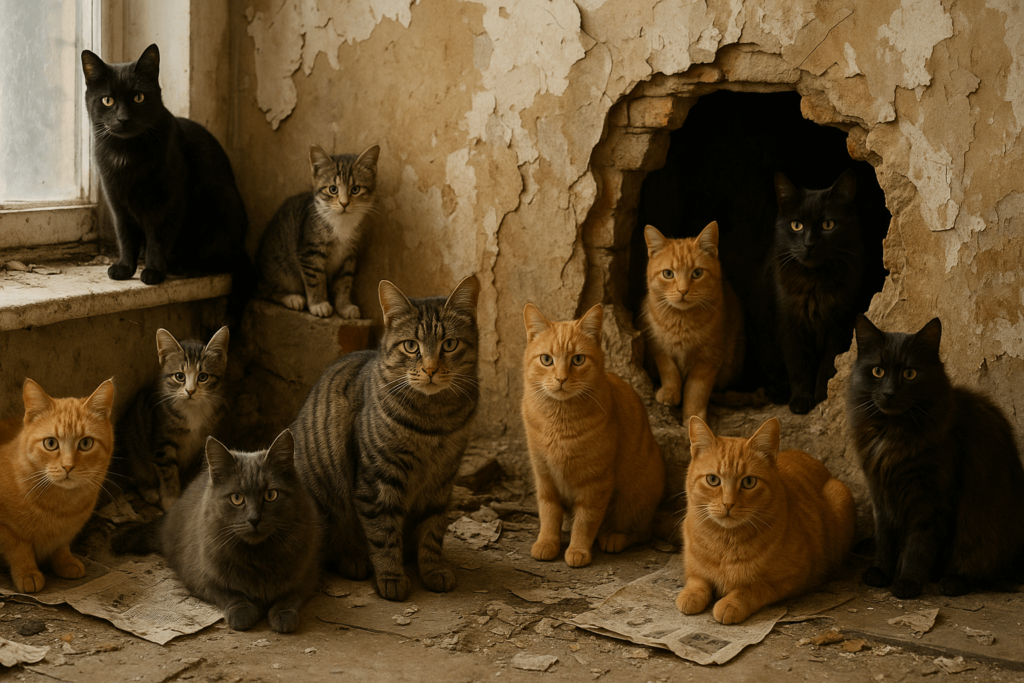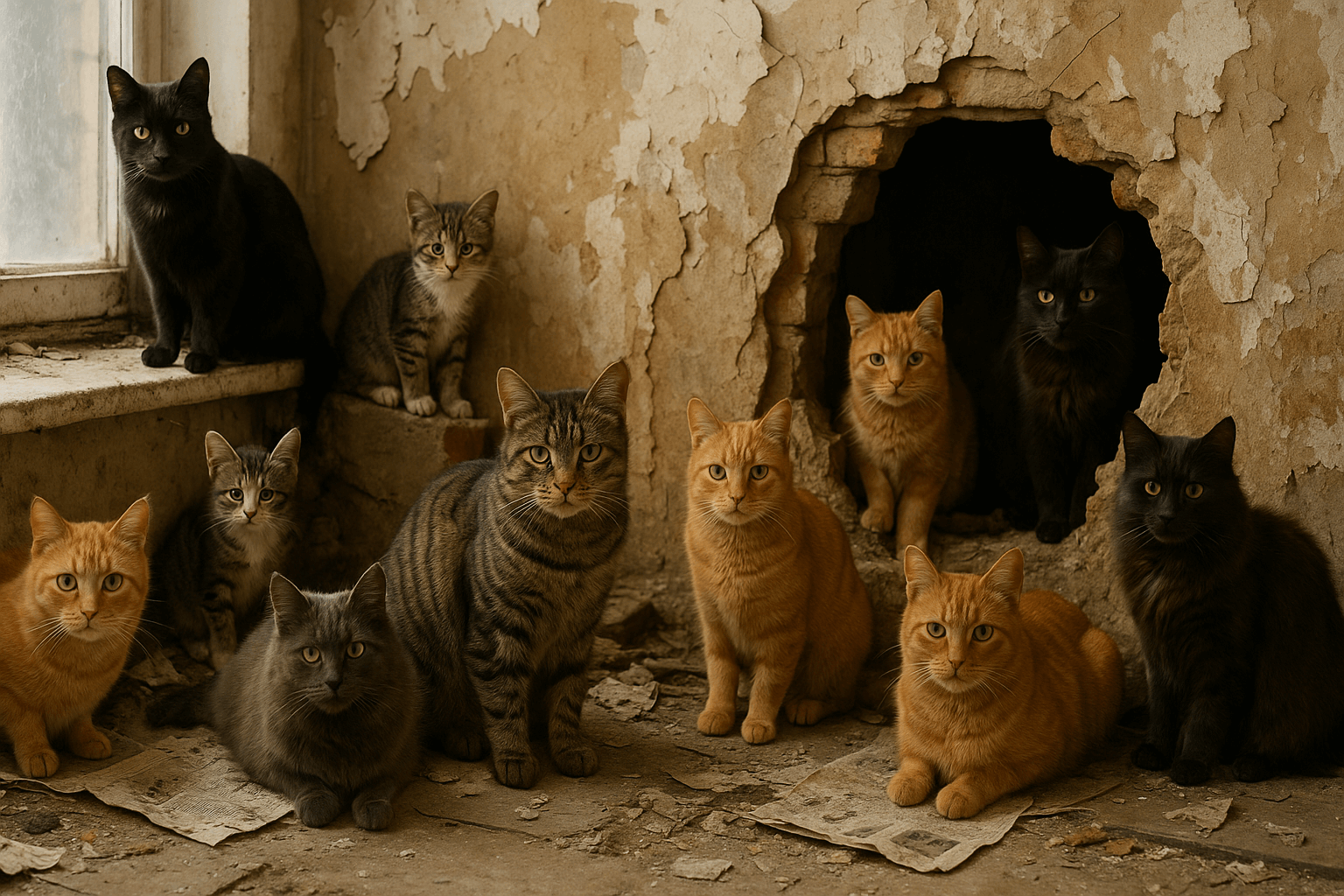Understanding Cat Infestations: Causes, Risks, and Solutions
A cat infestation occurs when an overwhelming number of stray or feral cats gather in a specific area, often leading to challenges for both the environment and local communities. While cats are beloved pets for many, unchecked populations can cause property damage, health concerns, and ecological imbalances. Understanding the root causes of cat infestations, their impact, and effective management strategies is crucial for addressing this growing issue. Whether you’re dealing with stray cats in your neighborhood or seeking ways to prevent future problems, this guide will provide actionable insights to help you navigate the complexities of cat infestations responsibly.
Common Causes of Cat Infestations
Cat infestations rarely happen overnight—they result from a combination of factors that allow stray or feral cat populations to grow unchecked. Identifying these causes is the first step toward finding sustainable solutions.
Lack of Spaying and Neutering:
Unaltered cats reproduce rapidly, leading to exponential population growth. A single pair of cats can produce dozens of kittens within a year.Abandonment by Owners:
Many stray cats are former pets abandoned by owners who no longer want or can care for them, contributing to overpopulation.Availability of Food Sources:
Access to food—whether from dumpsters, outdoor feeding stations, or natural prey—encourages cats to congregate and thrive in certain areas.Sheltered Environments:
Cats seek out safe spaces like abandoned buildings, alleys, or dense vegetation, which provide ideal conditions for breeding and survival.Limited Animal Control Resources:
In some areas, animal control services lack the funding or manpower to manage stray cat populations effectively.
Addressing these underlying causes is essential for preventing and managing cat infestations in a humane and responsible manner.

Signs of a Cat Infestation in Your Area
Recognizing the signs of a cat infestation early can help you take proactive steps to address the issue before it escalates. Look out for these indicators in your neighborhood or property.
Frequent Sightings of Stray Cats:
An unusual number of cats roaming around during the day or night may signal an infestation.Strong Odors from Cat Waste:
Accumulated feces or urine in hidden corners can create unpleasant smells and unsanitary conditions.Damage to Gardens and Landscaping:
Cats digging in soil, trampling plants, or using garden beds as litter boxes can ruin outdoor spaces.Nocturnal Noise Disturbances:
Fighting, mating calls, or loud meowing at night are common behaviors among large groups of stray cats.Presence of Fleas or Other Pests:
Infestations often lead to secondary pest problems, such as fleas, which can spread to pets and humans.
By staying vigilant and identifying these signs early, you can take action to mitigate the impact of a cat infestation on your community.
Check this guide 👉What Does a Stray Cat with a Clipped Ear Mean? Best 7 Tips!
Check this guide 👉How to Get a Stray Cat to Trust You: Best 7 Tips!
Check this guide 👉Can I Take a Stray Cat to the Vet for Free? Best 7 Tips!
Preventive Measures for Cat Infestations | Consequences of Ignoring the Problem |
|---|---|
Spay and neuter community cats | Overpopulation and resource strain |
Secure trash bins and food sources | Health risks from waste and pests |
Educate the public on responsible pet care | Increased abandonment of pets |
Implement trap-neuter-return (TNR) programs | Ecological harm to native wildlife |
Provide designated feeding areas | Property damage and noise complaints |
Effective Strategies for Managing Cat Infestations
Managing a cat infestation requires a balanced approach that prioritizes both human needs and animal welfare. Here are some proven strategies to consider.
Trap-Neuter-Return (TNR):
TNR programs involve trapping stray cats, spaying or neutering them, and returning them to their original location. This reduces reproduction rates over time.Community Education Initiatives:
Educating residents about responsible pet ownership, including spaying/neutering and proper care, helps prevent future infestations.Establishing Feeding Protocols:
Designated feeding areas with scheduled times can reduce chaos and minimize the spread of cats across neighborhoods.Collaboration with Local Shelters:
Partnering with shelters or rescue organizations can facilitate adoptions for sociable cats and provide resources for feral ones.Regular Monitoring and Maintenance:
Ongoing efforts to monitor populations and address emerging issues ensure long-term success in managing infestations.
Implementing these strategies fosters a harmonious coexistence between humans and cats while addressing the challenges posed by infestations.
Health and Environmental Impacts of Cat Infestations
Cat infestations don’t just affect people—they also pose significant risks to public health and the environment. Understanding these impacts underscores the importance of timely intervention.
Spread of Zoonotic Diseases:
Stray cats can carry diseases like toxoplasmosis, rabies, or ringworm, which can be transmitted to humans and pets.Threats to Native Wildlife:
Feral cats are predators that hunt birds, small mammals, and reptiles, disrupting local ecosystems and endangering native species.Contamination of Water Sources:
Cat waste left untreated can contaminate water supplies, posing risks to both human consumption and aquatic life.Increased Allergens in the Air:
Cat dander and fur contribute to allergens, exacerbating respiratory issues for sensitive individuals.Property Damage and Safety Hazards:
Cats chewing wires, scratching surfaces, or creating tripping hazards can compromise safety in affected areas.
Addressing these impacts promptly is vital for protecting both human communities and natural habitats from the adverse effects of cat infestations.
Benefits of Community Involvement
Engaging the community is critical to successfully managing cat infestations. When people come together, they can pool resources, share knowledge, and implement sustainable solutions.
Shared Responsibility:
Distributing tasks among volunteers ensures no single individual bears the full burden of managing the infestation.Access to Funding and Supplies:
Community-driven initiatives often attract donations and grants to support TNR programs and shelter efforts.Increased Awareness:
Public education campaigns foster empathy and responsibility, reducing abandonment and promoting spaying/neutering.Strengthened Neighborhood Bonds:
Working together on a shared goal builds trust and cooperation among residents.Long-Term Success Rates:
Community involvement creates accountability, ensuring efforts continue over time rather than being abandoned prematurely.
By fostering collaboration, communities can achieve meaningful progress in addressing cat infestations.
Humane Alternatives to Euthanasia
While euthanasia has historically been used to control stray cat populations, more humane alternatives exist that prioritize compassion and sustainability.
Adoption Programs:
Sociable stray cats can be rehabilitated and adopted into loving homes, reducing overall numbers humanely.Sanctuaries for Feral Cats:
Dedicated sanctuaries provide safe havens for feral cats that cannot adapt to domestic life.Behavioral Training:
Some feral cats can be socialized over time, making them candidates for adoption after rehabilitation.Non-Lethal Deterrents:
Using humane methods to deter cats from specific areas avoids harming them while addressing nuisance concerns.Support Networks for Caregivers:
Encouraging caregivers to feed and monitor colonies responsibly prevents further population growth.
These alternatives demonstrate that compassion and pragmatism can coexist in managing cat infestations.
Supporting Cats During Infestation Management
Managing a cat infestation doesn’t mean neglecting the well-being of the animals involved. Providing care and support ensures humane treatment throughout the process.
Providing Shelter:
Building simple shelters protects cats from harsh weather conditions and reduces stress.Ensuring Access to Clean Water:
Regularly refilling water stations keeps cats hydrated and healthy.Monitoring Health Conditions:
Watching for signs of illness or injury allows for timely veterinary intervention.Offering Nutritious Food:
High-quality food supports overall health and reduces scavenging behavior.Minimizing Stress During Trapping:
Using quiet, gentle techniques when trapping minimizes fear and trauma for the cats.
By prioritizing the welfare of the cats, we uphold ethical standards while addressing the challenges posed by infestations.
Frequently Asked Questions About Cat Infestations
What is the best way to handle a stray cat problem?
Implementing a Trap-Neuter-Return (TNR) program is widely regarded as the most effective and humane solution.
Can I relocate stray cats to another area?
Relocation is not recommended, as it can disrupt ecosystems and put the cats at risk without proper acclimation.
How do I keep stray cats out of my yard?
Use deterrents like motion-activated sprinklers, ultrasonic devices, or natural repellents to discourage cats from entering your property.
Are feral cats dangerous to humans?
While feral cats typically avoid humans, they can carry diseases or parasites that may pose health risks if contact occurs.
How can I support TNR efforts in my community?
Volunteer with local organizations, donate supplies, or advocate for TNR programs through awareness campaigns.
Taking Action Against Cat Infestations Responsibly
Cat infestations present complex challenges that require thoughtful, compassionate solutions. By understanding the causes, recognizing the signs, and implementing effective strategies like TNR programs, we can address this issue without compromising animal welfare. Collaboration between communities, shelters, and local authorities is key to achieving lasting results. With proactive measures and a commitment to responsible pet ownership, we can create safer, healthier environments for both humans and cats alike. Together, let’s work toward a future where cat infestations are a manageable concern rather than an overwhelming burden.
Canned Pumpkin for Cat Diarrhea: Best 7 Expert Tips! Natural remedy to firm stools, soothe upset bellies, and support gut health safely.
Can a Cat Give You Scabies? Best 7 Expert Tips! Discover the truth about feline mites, human skin risks, and how to protect yourself—without panic.
Cat Flea vs Human Flea: Best 7 Expert Tips! Discover the truth about bites, species, and how to eliminate infestations for good.
Weird Cat Behaviors: Best 7 Expert Tips! Discover why cats do strange things—and how to understand, not punish, their instincts for a happier home.





